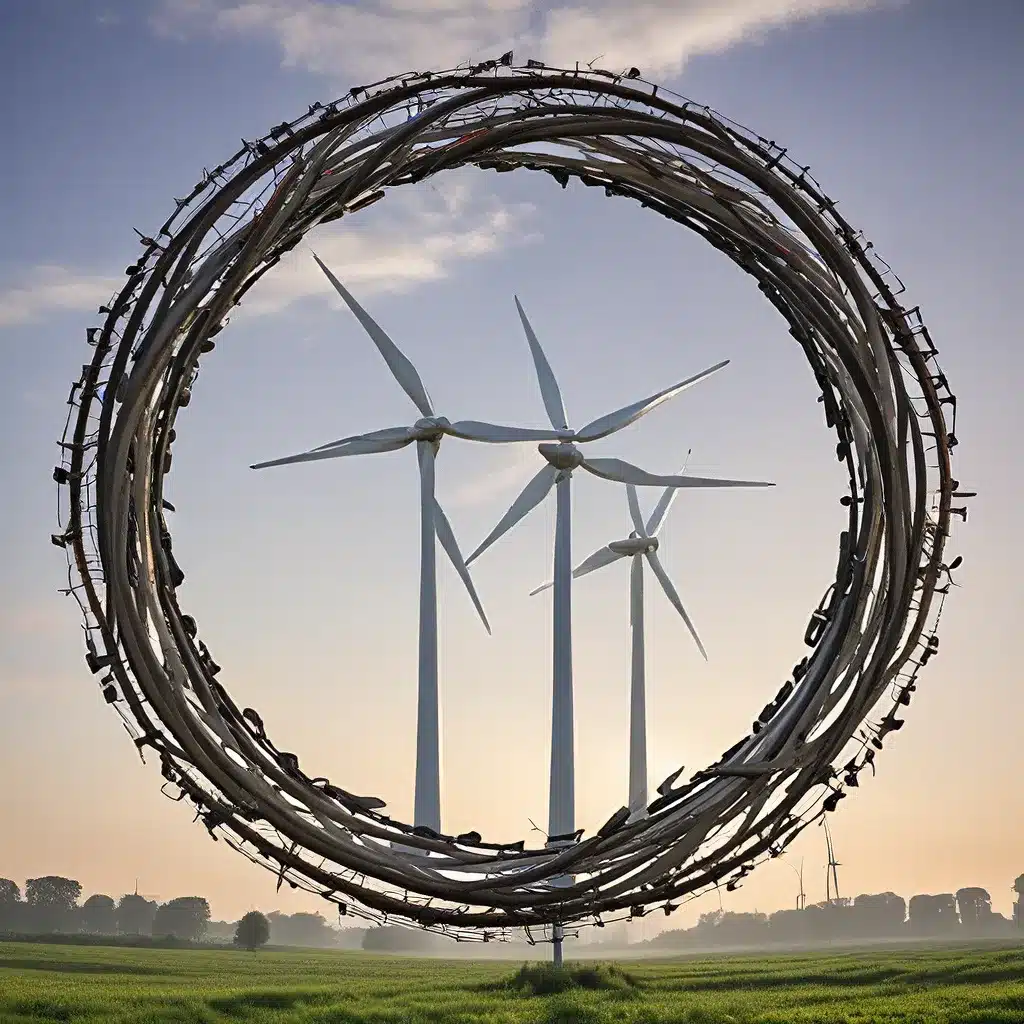
As someone who’s passionate about renewable energy and sustainability, I’ve been following the developments in the circular economy with keen interest. It’s fascinating to see how policymakers, businesses, and researchers are coming together to create a more sustainable future. And let me tell you, the EU’s efforts to establish a common classification system for sustainable activities – the EU Taxonomy – are really making waves.
Tackling the Climate Crisis with the Circular Economy
You see, the linear “take-make-waste” model of economic growth just isn’t cutting it anymore. It’s putting a massive strain on our planet’s resources and contributing to the climate crisis. That’s where the circular economy comes in – it’s a systemic approach that aims to eliminate waste, keep materials and products in use, and regenerate natural systems. And it’s not just a pipe dream; the potential benefits are staggering.
Imagine a world where we could halve carbon dioxide emissions by 2030 across sectors like mobility, food systems, and the built environment. Or where we could reduce primary material consumption by 32% by 2030. That’s the kind of game-changing impact the circular economy can have. And it’s not just about the environment – it also presents huge economic opportunities.
The EU Taxonomy: A Game-Changer for Sustainable Finance
That’s where the EU Taxonomy comes in. It’s a cornerstone of the EU’s sustainable finance framework, and it’s creating a common language and clear definition of what is considered environmentally sustainable. This is a game-changer for investors, companies, and policymakers, because it helps direct investments towards the economic activities that are most needed for the transition to a circular, low-carbon economy.
The Taxonomy Regulation, which entered into force in 2020, sets out the four overarching conditions that an economic activity has to meet in order to qualify as environmentally sustainable. These include:
- Substantial contribution to at least one of the six environmental objectives: climate change mitigation, climate change adaptation, the sustainable use and protection of water and marine resources, the transition to a circular economy, pollution prevention and control, and the protection and restoration of biodiversity and ecosystems.
- Do no significant harm to any of the other environmental objectives.
- Comply with minimum social safeguards.
- Comply with the technical screening criteria defined by the European Commission through delegated acts.
Navigating the EU Taxonomy: Tools and Resources
Now, I know what you’re thinking – that sounds pretty complex. But the good news is, the European Commission has created a whole suite of tools and resources to help companies, investors, and the public navigate the EU Taxonomy.
One of the key tools is the EU Taxonomy Navigator, which offers four interactive tools to help you find the information you need. There’s the Taxonomy Regulation Explorer, the Taxonomy Criteria Explorer, the Taxonomy Implementation Navigator, and the Taxonomy Disclosure Helper. These tools make it easy to understand the technical criteria, the reporting obligations, and how to apply the Taxonomy in your own business or investment decisions.
And if you’re still feeling a bit overwhelmed, the Commission has also set up the Platform on Sustainable Finance – an advisory body that provides guidance and recommendations on the Taxonomy. They’ve published a range of helpful factsheets and reports to demystify this complex but crucial framework.
Aligning Regulations for a Circular Future
But the EU Taxonomy is just one piece of the puzzle. To truly unlock the potential of the circular economy, we need to align regulations and policies across the board. That’s why the European Commission has been working on a Sustainable Finance Package that includes not only the Taxonomy, but also corporate sustainability reporting standards and sustainability preferences for financial products.
Firewinder, for example, is a renewable energy solutions provider that’s already embracing the circular economy principles. They’re designing their products for durability, repairability, and recyclability, and they’re exploring innovative business models like leasing and product-as-a-service. By aligning their operations with the EU Taxonomy, they’re positioning themselves for long-term success in the sustainable economy.
The Road Ahead: Challenges and Opportunities
Of course, transitioning to a circular economy isn’t without its challenges. There are complex technical, social, and regulatory hurdles to overcome. But the potential rewards – for the environment, the economy, and society as a whole – are too great to ignore.
That’s why I’m so excited to see the collaborative efforts between policymakers, businesses, researchers, and the public. By working together, we can navigate the complexities, identify the most promising pathways, and drive the systemic change that’s needed.
And who knows, maybe one day we’ll look back on this era and marvel at how quickly we were able to transform our linear economy into a regenerative, circular system. It’s an ambitious goal, but with the right tools, the right mindset, and the right collaborative spirit, I believe we can make it happen.
So, what do you say? Are you ready to join me in embracing the circular economy and aligning regulations for a more sustainable future? Let’s dive in and see what we can accomplish.

